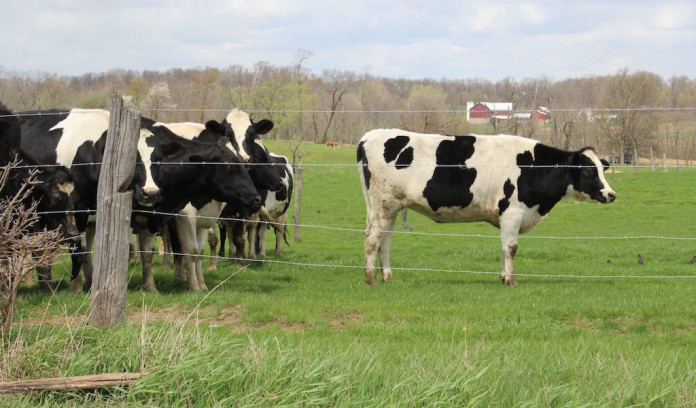When you look at your pastures this winter, do you see nice clean pastures, or do you see multiflora rose and unwanted scrub trees reminding you that they are not going away? Controlling undesirable woody plants such as multiflora rose, honey locust, autumn olive and ailanthus can improve your pastures by reducing competition for nutrients, saving on flat tire repair and reducing the number of lame animals from thorns.
A 2005 report by D. Pimentel et al. from Cornell estimated invasive weeds in pastures in the U.S. cost $1 billion a year in losses and damages. I can only imagine how high that number would be now, almost 20 years later.
Weed control is a never-ending war, but even in the winter, you can win some battles. Acting now while plants are dormant can be very effective at eliminating woody perennial plants while minimizing damage to non-target plants.
Mechanical
Controlling weeds by cutting or pulling when the ground is not frozen can be accomplished during winter. This can provide instant gratification since the results are immediate. Persistence in the future will be important with mechanical methods since roots that may remain in the ground are often able to generate new plants.
Herbicide
Winter often provides a little more free time to do projects like weed control. During winter, grass in the pasture is probably short and even small multiflora rose plants, autumn olive or honey locust trees that have been mowed for multiple years are easy to spot.
There are several herbicides labeled for use for woody plants, and each has advantages and disadvantages. During the winter, a basal bark treatment or a cut stump treatment can be very effective at helping control woody plants. These methods, when used on dormant plants, allow small targeted applications of herbicides to specific parts of the plant instead of widespread foliar treatments. Targeted treatments can reduce the potential damage to non-target plants.
Often, we think of these dormant season treatments as a way to improve woodlots, but they can also be very effective at eliminating saplings in a pasture that have been mowed off but just won’t go away. The spray equipment needed is small, and the expense of the equipment is minimal. A backpack sprayer with a long wand is a good option, but even a one-gallon handheld sprayer can work.
Basal bark
Basal bark applications can be very effective during dormancy which is typically mid-December to early April. The target plants should be dry, and the ground should not be snow-covered. A triclopyr product (such as Remedy, Garlon 4, or Relegate) or one that has triclopyr and 2,4-D (such as Crossbow or Crossroad) can be very effective when used as a basal bark treatment. The herbicide is mixed with an oil-based carrier such as basal oil or diesel fuel. Mixing rates may vary with the product from 4% to over 20%.
Basal bark sprays are typically applied from the ground to 15 inches up the base of the plant and all the way around. Cover the bark but don’t apply to the point that a puddle forms at the base. Trees up to 6 inches in diameter can be targeted. A dye can be added to assist with seeing which plants have been treated. Always read and follow the label instructions for the product you are using.
Follow any grazing restrictions that might be on the label if you are spraying in a pasture. Most restrictions are related to dairy production but check the label.
Cut stump
If you have cut or mowed trees only to come back months later to find lots of new shoots, a cut stump treatment may be for you. The products listed for basal bark application can also be used for cut stump treatments. In addition, concentrated water-based herbicides such as glyphosate can also be effective although some labels recommend use of the water-soluble cut stump treatments during the growing season for best results.
With the oil-based products, the outside of the stump as well as the cut top should be coated. With the water-based products only the cut surface and specifically cambium layer near the edge of the stump will need to be treated. As with the basal bark application, a dye can also be added to aid with identification of treated stumps.
When cutting the trees, be prepared to spray the stumps soon after cutting. Waiting more than 30 minutes can result in drying and sealing of the surface which reduces absorption of the herbicide. Again, always read and follow label directions.
One concern with either the basal bark or cut stump treatment is if the plants being treated have root grafted with desirable trees, the herbicide could also affect those non-target trees. This is usually more of a concern in a woodlot than a pasture situation. You can always contact your local extension educator for additional information.













